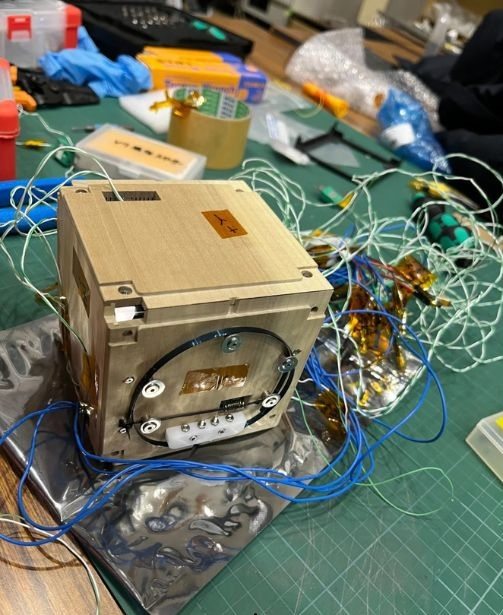In a groundbreaking move that promises to revolutionize space technology, NASA and the Japan Aerospace Exploration Agency (JAXA) are set to launch the world's first wooden satellite into orbit as soon as 2024. This innovative project, known as the LignoSat Mission, aims to address the growing issue of space debris by utilizing a renewable and biodegradable material that will minimize the environmental impact of spacecraft re-entry.
What is LignoSat satellite?
 Image: JAXA
Image: JAXA
The LignoSat satellite, named after the Latin word for wood, will be a small, cube-shaped structure measuring approximately 10 centimeters in diameter and weighing around 330 grams. It will be constructed primarily from treated Japanese magnolia wood, a lightweight and durable material that has been carefully selected for its ability to withstand the extreme conditions of outer space.
What Is HEL1OS Aboard Aditya L1 That Captured First High Energy Solar Flare, Know Significance
The satellite will carry a variety of sensors and instruments designed to test the performance of wood in space and gather data on its potential applications in future spacecraft. These experiments will focus on evaluating wood's thermal conductivity, structural integrity, and ability to withstand radiation exposure.
Saturn’s Rings Will Disappear In 2025, Know Details Here
Significance of Wooden Satellite
The LignoSat Mission represents a significant step towards mitigating the growing problem of space debris, which poses a serious threat to both operational spacecraft and future space exploration efforts. Over the years, thousands of satellites, rocket bodies, and other fragments of human-made space junk have accumulated in orbit, forming a hazardous cloud of debris that could potentially collide with vital infrastructure and disrupt critical services.
What is a Black Hole? Which Is The Biggest Black Hole In The Universe?
The use of wood in satellite construction could have a number of positive impacts on the space industry. In the vacuum of space, wood does not burn or rot. However, upon reentry into Earth's atmosphere, it will incinerate into a fine ash. This makes wood a biodegradable material that is safe for the environment. "Despite the extreme environment of outer space involving significant temperature changes and exposure to intense cosmic rays and dangerous solar particles for ten months, tests confirmed no decomposition or deformations, such as cracking, warping, peeling, or surface damage."
Comments
All Comments (0)
Join the conversation